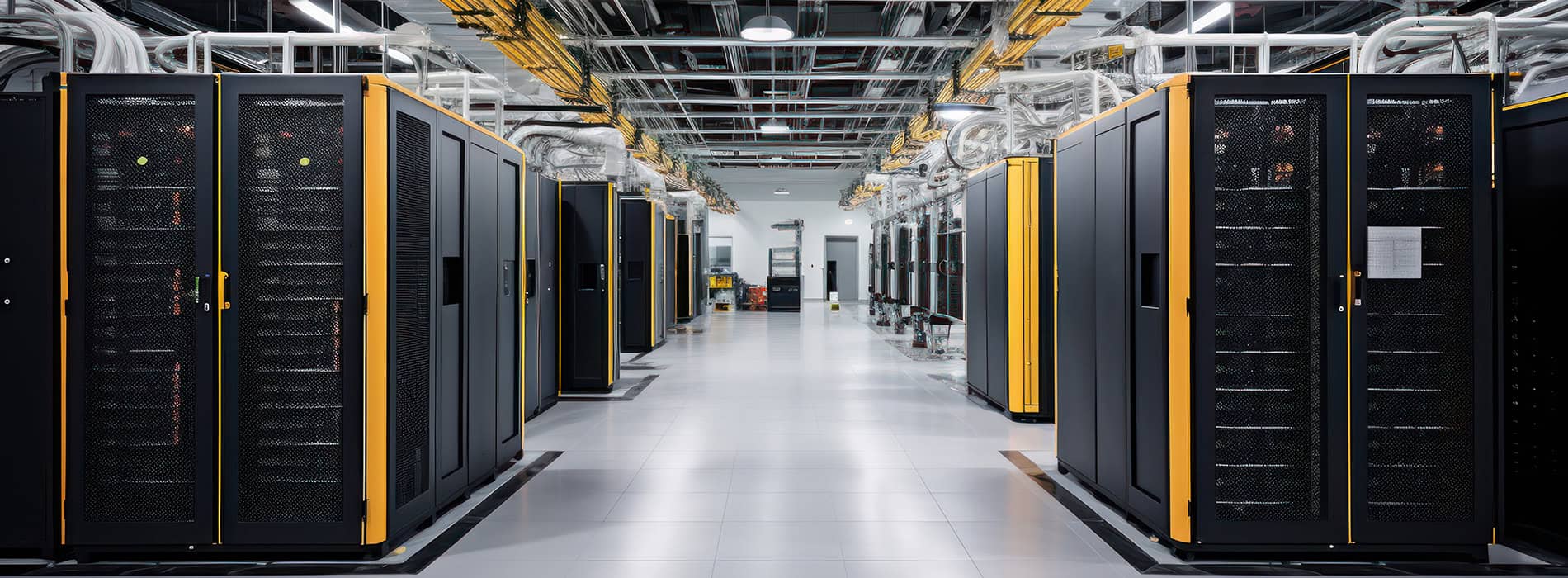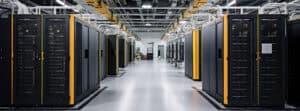Sobrecarga en la Red: IA y confiabilidad de la red Parte 1 — La crisis energética de la IA: Cómo los centros de datos están rediseñando la confiabilidad de la red
Sobrecarga en la Red: IA y confiabilidad de la red es una nueva serie de blogs, provocadora y reflexiva, escrita por Matt Carrara—líder de la industria y presidente de Doble Engineering—que explora cómo el auge de la IA está generando nuevos desafíos y oportunidades para la confiabilidad de la red eléctrica.
La primera entrega, «La crisis energética de la IA: Cómo los centros de datos están rediseñando la confiabilidad de la red» establece el contexto sobre cómo la demanda energética impulsada por la IA está generando nuevas sobrecargas impredecibles en la red eléctrica. En las próximas semanas se publicarán otros blogs de esta serie de cinco partes.
La inteligencia artificial está impulsando una crisis silenciosa en la red eléctrica. La demanda está aumentando más rápido de lo que las empresas de servicios públicos pueden planificar, y pocas están preparadas para lo que se avecina.
La inteligencia artificial, que antes estaba confinada a laboratorios y empresas emergentes, ahora está presente en casi todos los sectores, desde la manufactura y las finanzas hasta la defensa. Pero a medida que se acelera su adopción, también lo hace su presión sobre la infraestructura energética.
Los modelos de IA generativa y los sistemas de aprendizaje automático a gran escala consumen cantidades asombrosas de electricidad. El Departamento de Energía informó recientemente que el crecimiento de la carga del centro de datos se ha triplicado en la última década y se proyecta que se duplicará o triplicará para 2028. Esto no es un aumento temporal. Es el comienzo de una transformación a largo plazo sobre cómo y dónde se consume la energía. Y la red no está diseñada para eso.
La demanda de IA no es predecible. Y eso es un problema
La IA no se comporta como la carga industrial tradicional. No sigue patrones estacionales ni ciclos fijos. La demanda puede aumentar de la noche a la mañana: cuando una empresa lanza una nueva herramienta de IA, amplía un centro de datos o actualiza la infraestructura informática. Estos incrementos no son menores. Son incrementos súbitos masivos y de alto consumo energético que pueden ocurrir sin previo aviso.
Es más, estos incrementos súbitos no se limitan a los campus de nube centralizados. Google introdujo recientemente la capacidad de ejecutar modelos de IA de Gemini directamente dentro de sus centros de datos. Esto significa que las cargas de trabajo de IA de alta densidad ahora se están trasladando más cerca del borde de la red, hacia instalaciones que originalmente no fueron diseñadas para gestionar requisitos informáticos o energéticos tan masivos.
El desafío no es sólo el crecimiento rápido. Es una falta de visibilidad. Las empresas de servicios públicos a menudo no saben cuándo, dónde ni cuánta carga aparecerá. Sin tiempo para planificar, se ven obligadas a adoptar un modo reactivo y trabajar para estabilizar sistemas que ya están al límite de su capacidad. En las zonas urbanas, donde secciones clave de la red tienen más de 50 años, la construcción de centros de datos de alta densidad y alta demanda puede generar peligrosos focos de inestabilidad. Y mientras las empresas de servicios públicos trabajan para mantenerse al ritmo de la demanda de IA, también enfrentan una tormenta perfecta de presiones externas.
Los aranceles, la política comercial y el riesgo en la cadena de suministro agregan más presión
Mientras las empresas de servicios públicos se apresuran a prepararse para el apetito energético de la IA, también se enfrentan a una tormenta de restricciones externas. Los aranceles, los cambios en el comercio internacional y los cuellos de botella en la cadena de suministro están retrasando el acceso a los transformadores, boquillas y componentes de subestaciones que las empresas de servicios públicos necesitan para respaldar la expansión de la red.
No se trata sólo de costos más elevados. Se trata del tiempo. Los plazos de entrega de equipos críticos están aumentando, mientras que las demoras en la concesión de permisos frenan las actualizaciones de infraestructura. Sin inversiones proactivas y mayor agilidad en la adquisición y planificación, las empresas de servicios públicos corren el riesgo de quedarse rezagadas justamente cuando los desafíos son mayores.
Las consecuencias de esto van más allá de los sobrecostos. Los retrasos, sumados a la demanda impredecible de la IA y la expansión de los centros de datos, aumentan el riesgo de apagones parciales, inestabilidad de la red y la paralización de los esfuerzos de modernización de la infraestructura eléctrica.
La red no está lista, pero puede estarlo
Resolver la crisis energética de la IA requiere algo más que aumentar la capacidad. Se necesita una red más inteligente, rápida y flexible, que funcione con visibilidad en tiempo real, diagnósticos basados en condiciones y toma de decisiones informada.
Pero la información por sí sola no es suficiente. A medida que los sistemas se modernizan, las empresas de servicios públicos también necesitan la experiencia para interpretar lo que los datos les están indicando. Eso significa invertir no sólo en herramientas más inteligentes, sino también en ingenieros y equipos de campo que saben cómo utilizarlas. Se espera que hasta 400.000 empleados del sector energético estadounidense se jubilen en la próxima década (McKinsey), por lo que la industria debe priorizar el desarrollo de la fuerza laboral junto con las mejoras en infraestructura. La confiabilidad a largo plazo depende tanto de la innovación como de la experiencia: de la tecnología y las personas que la respaldan.
En Doble, hemos ayudado a las empresas de servicios públicos a afrontar cambios disruptivos durante más de un siglo. Y aunque las tecnologías han evolucionado, la misión sigue siendo la misma: proteger la red, prevenir fallas y garantizar un futuro más confiable.
Información adicional:
- Blogs:






